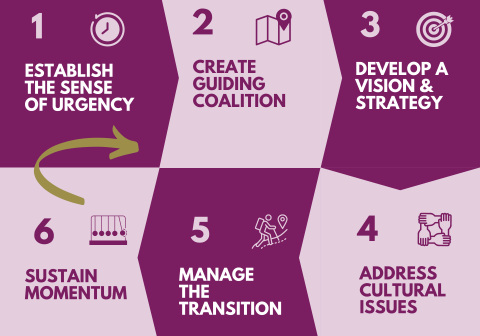What we are doing
Research infrastructures are at the core of discovery science in the life sciences and at the core of EU-LIFE priorities. We gave a special attention on research infrastructures in our contribution to Horizon Europe’s shaping through our papers EU-LIFE’s vision for FP9: key priorities and Towards better research value in Europe: translating knowledge to innovation.
The EU-LIFE Core Facilities working group provides our members with a forum for discussion of core facility-specific challenges and good practices, as well as collaboration opportunities, the possibility to compare indicators across institutes, and the chance to participate in the dialogue about relevant European policies. A survey conducted by the working group among the EU-LIFE member institutes resulted in the EU-LIFE Core Facilities Benchmarking Survey Report, aimed as a reference tool to help our partners improve their performance.
In order to promote excellence in research infrastructures and to facilitate the exchange of good practices, EU-LIFE collaborates with the Core Technologies for Life Sciences (CTLS) network in the identification and coordination of joint activities and initiatives, together with other organizations such as CoreForLife, Alliance4Life and ABRF.
After the International Conference on Research Infrastructure (ICRI 2018), we felt that in spite of being extremely important, discussions continued to overlook the role of small- and medium-sized research infrastructures in the research and innovation ecosystem. Therefore, we released a Call for action to the EU member states, the European Commission and ESFRI and we invited interested parties and stakeholders to support this statement. Following that call, we organized a workshop bringing together relevant stakeholders in order to join forces for getting better recognition of these significant infrastructures.
Relevant publications
- Unlocking success: The power of change management in core facilities (EMBO reports)
- EU-LIFE contribution to ESFRI Landscape Analysis
- Why the European scientific ecosystem must recognise smaller research infrastructures (Open Access Government)
- Overview of EU-LIFE Core Facilities Benchmarking Survey 2021
- Acknowledging and citing core facilities (EMBO reports)
- Call for Action on small and medium scale research infrastructures in Europe
- Long-Term Sustainability of RI: EU-LIFE contribution
Latest events
Our position
Leading research institutes in their countries, EU-LIFE institutes host 125 small and medium sized research infrastructures with more than 820 staff members that provide a wide spectrum of services to a wide range of internal and external users, both academic and businesses. The range of research infrastructures within these institutes is wide spanning from genomics, proteomics, bioinformatics, NMR, to animal houses, pre-clinical and imaging facilities.
We know that fostering European networks of technological facilities in the next Research Framework Programme Horizon Europe can prove cost-effective enabling access of researchers and innovators to technology and talent (e.g. data analysts) in all corners of Europe. This should be coupled to measures to promote the investment of Member States in research infrastructure such as for example co-funding from these Member States.
The European Commission and other key players recognise the role of “non-ESFRI” research infrastructures and support them to a certain degree. However, EU-LIFE is of the opinion that more can and should be done to promote visibility and support for small and medium sized research infrastructures.
Why it’s important
The contribution of Research & Innovation Infrastructure (RI) to boost European capacity, jobs and economic growth is well documented.
Currently, the policy on RI mainly involves the activities of the European Strategy Forum Research Infrastructure (ESFRI), including ESFRI Roadmap projects and landmarks, and the long term sustainability of costly research infrastructures with a pan-European user group. While ESFRI and global research infrastructures are essential for Europe, the current policies overlook a relevant aspect: the role of small- and medium-sized research infrastructures in the research and innovation ecosystem.
More and more scientific disciplines depend on costly technologies and equipment of smaller scale. They provide essential, cutting-edge technological support to thousands of researchers on a day-to-day basis across Europe. Moreover, they develop and implement new technologies and train the next generation of scientists. This group of essential research infrastructures, generally termed small and medium sized research infrastructures, is however suffering from structural support at a European level and even at a national or regional level.



